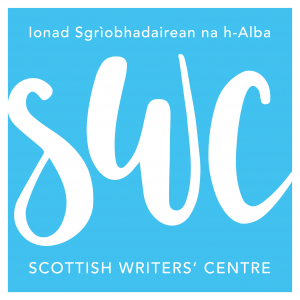 Finding a new perspective on Robert Burns is not an easy thing to do. Today we see the national poet’s face on everything from biscuit tins to subway trains, and since his death his life and works have been dissected innumerable ways by crowds of critics and hordes of historians. Over the course of the evening, however, Marc R. Sherland managed to do just that: by sharing new insights into Burns’ education as a young man, he not only provided a fresh perspective on the works he went on to produce, but also humanised the man from the portrait and the national myth by setting his life in a context of closely researched social and educational reform.
Finding a new perspective on Robert Burns is not an easy thing to do. Today we see the national poet’s face on everything from biscuit tins to subway trains, and since his death his life and works have been dissected innumerable ways by crowds of critics and hordes of historians. Over the course of the evening, however, Marc R. Sherland managed to do just that: by sharing new insights into Burns’ education as a young man, he not only provided a fresh perspective on the works he went on to produce, but also humanised the man from the portrait and the national myth by setting his life in a context of closely researched social and educational reform.
Sherland himself, though originally from Kent, has been a dedicated Burnsian since the age of 21, when the speaker scheduled to give The Immortal Memory at a Burns Night cancelled due to bad snow, and Marc had just half an hour to pull something together. Since then he’s spent far longer exploring and researching the national bard, and finds one of the greatest attractions is his use of Scots language. ‘I like Scots,’ Marc tells us. ‘English can often be quite starchy, and it can be difficult to find the right word. In Scots, the words come emotionally loaded: words like “dreich”, which is somehow itself already wet and grey.’
Despite his innovative and undeniably careful linguistic constructions, Burns is often thought of as a genius without education, a drunkard and a philanderer. While the last term perhaps cannot be denied, Marc specifically wanted to challenge our perceptions of the first two, perceptions which were in place even in Burns’ lifetime, as shown by the comment made by his contemporary Henry MacKenzie that Burns was just a ‘Heav’n-taught ploughman’. Though the term is useful in that it shows the connection Burns had to labouring throughout his life, it conveys nothing of the great effort put into his education by the poet himself, his friends and neighbours, and, most of all, perhaps, his father, William Burness.
Though a number of governmental acts since 1496 had increased formal educational opportunities, stipulating that a school must be linked to the church in every district, classes were still limited, unavailable to women, and focused primarily on biblical knowledge. This would have been Burns’ first exposure to the written word, with his family also frequently reading and discussing the bible around the fire at night, experiences that no doubt informed his later ‘Cotter’s Saturday Night’; but his father went even further to provide his first educational experience, writing his own ‘Manual of Christian Belief’, based on the question-and-answer format of John Knox’s catechism.

Thus, ‘although schooling was negligible for almost all rural children,’ Marc continued, ‘Burns was taught to value education’. In a letter Burns described himself by the age of nine as ‘an absolute critic of verbs, tenses and particles,’ but, in an example of the kind of humanity uncovered by Marc’s research, a letter from an early schoolmaster revealed Burns’ ear for music was ‘remarkably dull’ and his ‘voice untunable’.
The musicality of his verse is undeniable though, and another part of Marc’s research revealed a likely source for the ‘Habbie stanza’ (AAABAB) Burns’ most frequently used verse form. Local broadsheets sold door to door were likely the most frequently-available source of writing for the young Burns to devour, and one of these contained an elegy to Habbie Simpson, the local Piper of Kilbarchan renowned more for his drinking than his playing. Again, we see an eager and intentional assimilation of his literary surroundings that challenges the notion of Burns being ‘Heav’n taught’, rather pointing instead towards a keen young man of unusual determination and interest.
Marc was able to compile a remarkably precise list of Burns’ reading owing to the poet’s own deliberate recording of this in letters to friends and family. Texts known to have been read by Burns include Pope’s translation of Homer, Laurence Sterne’s Tristram Shandy and Tobias Smollet’s picaresque novels, as well as practical guides to ‘Horses, Hoeing and Husbandry’. Another fascinating part of Marc’s research was to emphasise the importance of what Burns learned outside of books. Tales told to him by his family maid Betty Davison of devils, ghosts, warlocks, wraiths and kelpies in his own words ‘cultivated the latent seeds of poesy’ that would show their influence in such explorations of the fantastic and occult as ‘Tam O’Shanter’. And a trip to boarding school at Kirkoswald in 1775 may have taught Burns ‘mathematics and land mensuration’ but, again, in his own words, he made ‘greater progress in the knowledge of mankind’ while away on this ‘smuggling coast’, where he was exposed to alcohol and women for the first time, both of which were to prove perhaps the two of the most important forces in his life.
Thus, despite the concern for small details and what might be considered ‘unrefined’ subjects in his verse, as Marc ably demonstrated over the course of the evening, to consider Burns merely ‘a Heav’n-taught Ploughman’ would be to fail to acknowledge not only the remarkable educational reform underway in Scotland in the 18th century, but also the concerted efforts of the dedicated family members and teachers who raised and guided Burns, and, more than anything else, Burns’ own remarkable thirst for learning.
Words and photographs by Scott Crawford Morrison



